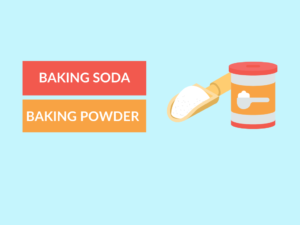The Difference Between Roasting and Baking
Roasting and baking are two popular methods of cooking that are often used interchangeably. However, they have distinct differences in terms of temperature, cooking time, and the types of food they are used for. In this article, we will explore what roasting and baking are, provide examples and uses for each method, and highlight the key differences between the two.
What is Roasting?
Roasting is a dry heat cooking method that involves cooking food in an oven or over an open flame. It is commonly used for larger cuts of meat, such as whole chickens, turkeys, or roasts. The high heat creates a browned, flavorful exterior while retaining the moisture inside the meat.
Examples of Roasting
– Roasting a whole chicken with herbs and spices
– Roasting potatoes with olive oil and rosemary
– Roasting salmon fillets with lemon and dill
Uses of Roasting
– Roasting is often used to cook large cuts of meat because it produces a delicious, crispy exterior while keeping the inside juicy and tender.
– It is also a popular method for cooking root vegetables and other hearty vegetables as it enhances their natural flavors and caramelizes the sugars.
What is Baking?
Baking is a method of cooking that uses dry heat in an enclosed space, such as an oven. It is commonly used for cooking bread, pastries, cakes, and other dessert items. Baking relies on the circulation of hot air to cook the food evenly and create a golden brown crust.
Examples of Baking
– Baking a loaf of bread from scratch
– Baking cookies with chocolate chips
– Baking a cake for a special occasion
Uses of Baking
– Baking is primarily used for cooking dough-based items, such as bread, pastries, cakes, and cookies.
– It is also a great method for crisping up certain foods, like tarts or quiches, by baking them in a pre-baked crust.
Differences between Roasting and Baking
| Difference Area | Roasting | Baking |
|---|---|---|
| Temperature | Higher temperatures are used, usually above 400°F (200°C). | Lower temperatures are used, typically between 300°F (150°C) and 375°F (190°C). |
| Cooking Time | Longer cooking times are required, often several hours. | Shorter cooking times are needed, usually less than an hour. |
| Type of Food | Primarily used for larger cuts of meat and hearty vegetables. | Mainly used for bread, pastries, cakes, and cookies. |
| Moisture Retention | Roasting helps retain moisture in the food due to its higher temperature and longer cooking time. | Baking can cause some moisture loss, leading to a drier texture in the finished product. |
| Heat Source | Roasting can be done in an oven or over an open flame. | Baking is typically done in an oven. |
| Cooking Vessels | Roasting pans or baking dishes with higher sides are often used. | Baking pans or sheets with lower sides are commonly used. |
| Flavor Development | Roasting enhances flavors through browning and caramelization. | Baking is primarily used to cook and set the structure of dough-based items. |
| Cooking Purpose | Roasting is used to create a crispy exterior while keeping the interior moist and tender. | Baking is used to cook the interior of the food and create a golden brown crust. |
| Commonly Baked Foods | None | Bread, pastries, cakes, and cookies. |
| Commonly Roasted Foods | Large cuts of meat, poultry, and hearty vegetables. | None |
Conclusion
In summary, roasting and baking are both cooking methods that utilize dry heat, but there are key differences between the two. Roasting is typically used for larger cuts of meat and vegetables, requiring higher temperatures and longer cooking times. Baking, on the other hand, is commonly used for dough-based items like bread and pastries, with lower temperatures and shorter cooking times. Understanding these differences can help you choose the appropriate cooking method for your desired dish.
People Also Ask
Q: Can you bake instead of roast?
A: While roasting and baking are similar, they have slight differences in temperature, cooking time, and the types of food they are used for. It is generally not recommended to bake instead of roast or vice versa, as it can affect the texture and flavor of the final dish.
Q: Can you roast instead of bake?
A: Yes, you can roast instead of bake in some cases. Roasting typically involves higher temperatures and longer cooking times, which can be adjusted accordingly to achieve similar results to baking. However, for specific dough-based items like bread or pastries, roasting may not be suitable.
Q: Is roasting a dry heat method?
A: Yes, roasting is considered a dry heat method because it relies on hot air to cook the food. By contrast, moist heat methods involve cooking food in a liquid medium like water, broth, or steam.
Q: Can you roast in a baking dish?
A: Yes, you can roast in a baking dish. Baking dishes with higher sides are often used for roasting larger cuts of meat or vegetables, as they help contain any liquids or drippings that may be produced during the cooking process.
Q: Can you bake cakes without an oven?
A: While traditional cakes are baked in an oven, there are alternative methods for baking cakes without an oven, such as using a stovetop, slow cooker, or microwave. These methods may require specific recipes and techniques to achieve the desired results.


